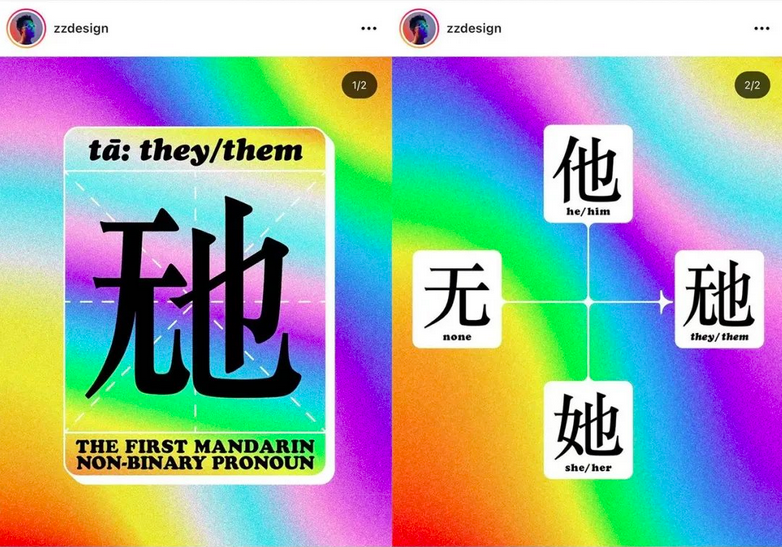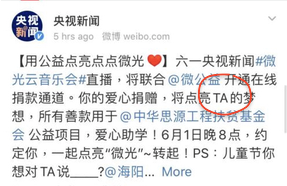
The gradual rise of gender-neutral pronouns in Hong Kong and mainland China
by Pisana Ferrari – cApStAn Ambassador to the Global Village
Around the world people who do not identify as male or female are increasingly using gender-neutral pronouns. Many have taken to adding these in their e-mail signatures and social media profiles, and pronoun badges are also becoming popular in companies, schools and universities. Some languages and cultures have more straightforward solutions than others, depending on what parts of speech are gendered (if any). In English, using “he” and “she” requires us to assign a gender to an individual. The word “they” as a singular gender neutral pronoun has become very common (and was even chosen as the Merriam-Webster “Word of the Year” in 2019). Many countries are experimenting with gender-neutral pronouns, and inclusive language in general, e.g. France, Germany and Spain (see links to our articles on this topic below). The Chinese, likewise, are exploring the spectrum of their language. Gender-specific third-person pronouns in the Chinese language have only existed for about 100 years. Before the early 20th century, Chinese third-person pronouns were gender neutral. The usage of a female pronoun did not become prevalent until the 1920s, with the rise of the women’s movement in China. The words for他 (“he”) and 她 (“she”) are both pronounced “tā” in Mandarin: both pronouns sound exactly the same. Gender specification therefore becomes apparent only in written Chinese.
Different options currently in use
In 2015 an intersex information platform called The Missing Gender 0.972 invented the word ‘X也,’, a gender-neutral alternative to 他 and 她. The word uses the English letter X to represent the non-binary community. Though they improve inclusivity, invented characters like X也 pose linguistic and practical challenges. “For instance, how do you type it [on a phone or keyboard]? If you cannot type it, then circulation [and adoption] will be limited,” says Joanne Leung, a transgender activist in Hong Kong who identifies as non-binary.
In 2021 Chinese born Zipeng Zhu, an art director based in New York, announced that he had created “the first non-binary they/them pronoun in Mandarin” via a post on Instagram (see cover photo of this article).He explained that it was a combination of the character 无 (none) X也 and她. “Hopefully one day this could be added to our dictionary”, he says (we could not find any further news around its use)
Another example of new pronouns commonly used within China is the pinyin romanization “TA”.
“Some mainstream companies, including China Central TV and JDB Group [a beverage manufacturer], are using “TA” in their advertisements or Weibo posts when gender is irrelevant,” says Leung. Some customer services on the Chinese online shopping platform Taobao have also started to use “TA” to address customers (see below for an example of the romanized “TA” appearing in a Chinese text).
Finally, Leung says she often uses 他 (“he”) along with a brief explanation that this pronoun does not indicate a specific gender. She makes the point that 他 was originally a gender-neutral pronoun and therefore inclusive and that by arguing about the binary 他 and 她, one risks falling back into the ideology of patriarchy. Some even suggest doing away altogether with the female pronoun in written form.
Looking to the future
Queer director Da Jing (他/TA/they) says that they believe new genderless Chinese pronouns will appear in the future, as sex and gender education gradually improve in China. He is quoted in an article for Radii, an independent platform of artists, writers and creators, based in China, as saying: “From my observation, queers who were born after 2000 place great emphasis on individualism, independent thinking, and self-realization. So I am very optimistic that queer culture will completely break the traditional Chinese binary gender education and become the mainstream.”

See also our blog articles on the topic of inclusive language
How to use gender-neutral language, and why it is important to try
French government bans inclusive writing in schools but accepts other changes that feminize language
EU Commission internal guidelines for inclusive communication withdrawn over widespread protests
Sources
“How non-binary Chinese people seeking a gender-neutral third-person pronoun for themselves are coming up with solutions, including a new Chinese character”, Wee Kek Koon, Post Magazine, February 24, 2022
“Debate Over New Gender Neutral ‘They/Them’ Chinese Character”, Rakini Bergundy, July 7, 2021
Your Complete Guide to Chinese Gender-Inclusive Pronouns”, Lu Zhaoo Radii, February 7, 2021
“ ‘X也’ and ‘Ta’: The gradual rise of gender-neutral pronouns in Chinese”, Kathi Lee, Ariana, July 10, 2020
Photo credit
Screenshot of a tweet by @zzdesign showcasing the new Mandarin gender-neutral pronoun invented by Zipeng Zhu